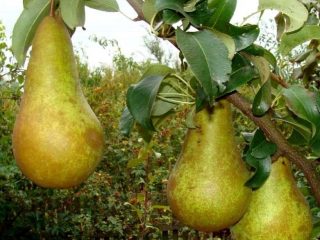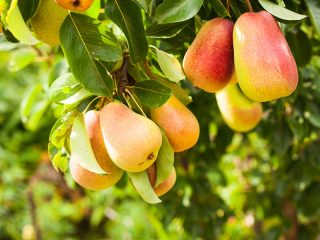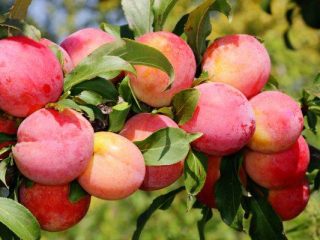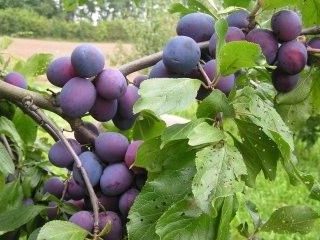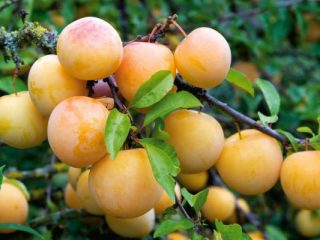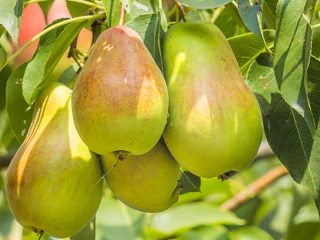Content
Sharafuga Bella Gold is an exotic fruit hybrid, the main advantage of which is sweet fruits with an apricot-plum flavor. It was bred by American breeders and recommended for home cultivation.
Description of sharafuga variety Bella Gold
The tree belongs to the category of medium-sized and grows to approximately 3 m in height. It has a spherical crown and visually resembles a plum with elements of apricot. The branches of the hybrid have thorns, and the leaves are characteristically curled.

Sharafuga or nectacotum is a hybrid of apricot, plum and peach, and its creator is considered to be the American biologist Flood Seiger
Taste qualities
Sharafuga Bella Gold is valued for its sweet fruits without any noticeable sourness. Their taste contains notes of plum and apricot, and the pit is more like a peach and is easily separated from the pulp.
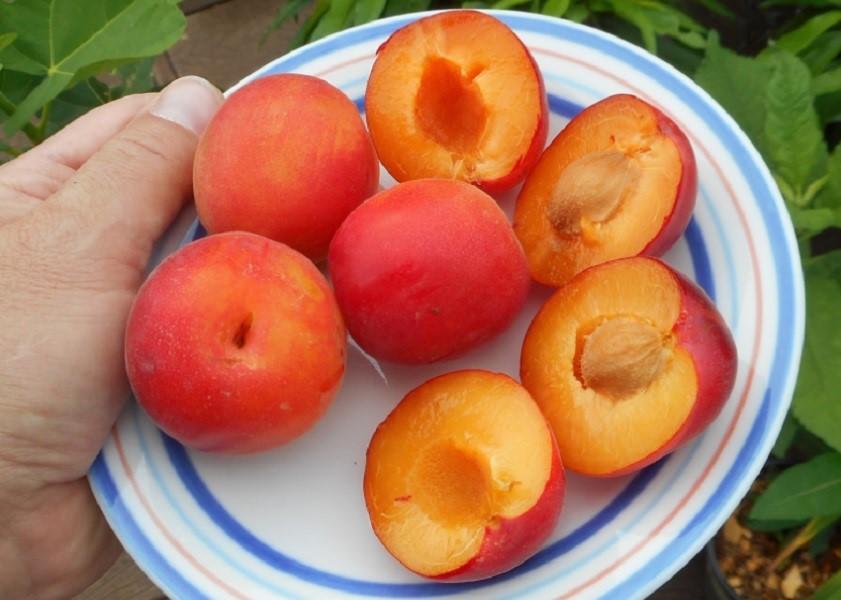
Ripe Bella Gold sharafuga fruits are consumed fresh and used for making jams, compotes and preserves.
Productivity
Sharafuga Bela Gold begins to bear fruit 3-4 years after planting and reaches maximum productivity at the age of 8-10 years. It is characterized by high productivity. From one tree you can collect at least 25 kg of ripe fruit per season.
Flowering and ripening
Sharafuga Bella Gold blooms in May, and the first fruits ripen in the second half of August or early September. They have a round shape and are quite large in size, reaching 6-7 cm in diameter. Fruits that are ripe for a long time do not fall off and stay firmly on the tree. It is better to remove them from the branches by hand. If you try to harvest by shaking the tree, the fallen fruit may be damaged and will not last long. They need to be picked on time, otherwise they will become easy prey for birds, in particular for jays, who love to peck the juicy pulp.
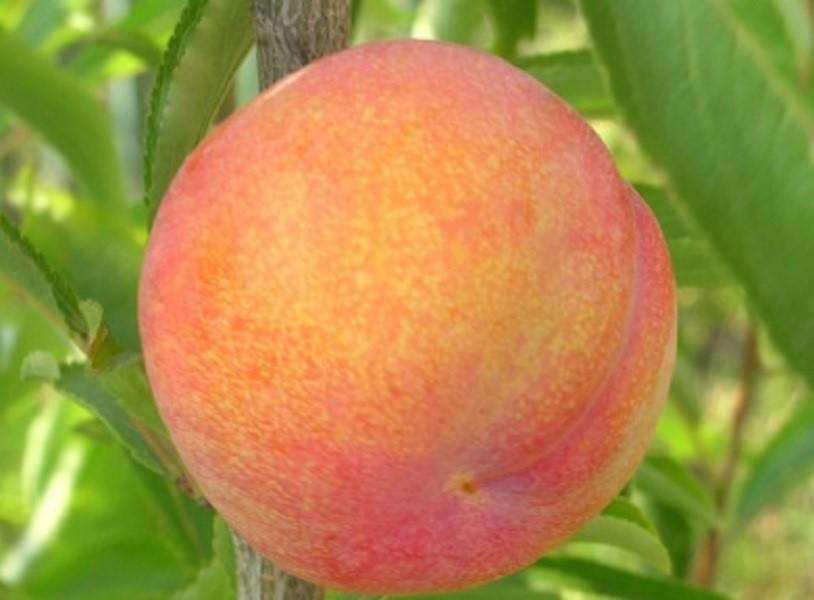
Ripe sharafuga fruits of the Bella Gold variety are covered with yellow skin strewn with orange-red specks
Frost resistance of sharafuga Bella Gold
The fruit hybrid is characterized by high winter hardiness and can easily withstand temperature drops down to -30-35 0C. Even if small branches freeze slightly, after spring pruning the tree will quickly recover and continue to grow. Due to the fact that after the leaves bloom, Bella Gold is able to withstand short frosts down to -3 0C, it can be grown even in the central regions of Russia.
Keeping quality
The fruits do not spoil for 1.5-2 weeks after being picked from the tree. Thanks to the strong skin and dense pulp, the fruits can withstand transportation over long distances without losing their marketable characteristics.
Resistance to diseases and pests
The hybrid is characterized by high immunity and, with minimal prevention, is immune to major diseases. Under unfavorable conditions, sharafuga is affected by the peach curl pathogen, and among the pests, the greatest danger to Bella Gold are sawflies and codling moths.
Advantages and disadvantages
Nectacotum Bella Gold is valued for its high yield and winter hardiness. Thanks to the excellent quality of the fruit and good immunity, the hybrid is very popular among owners of small private gardens.
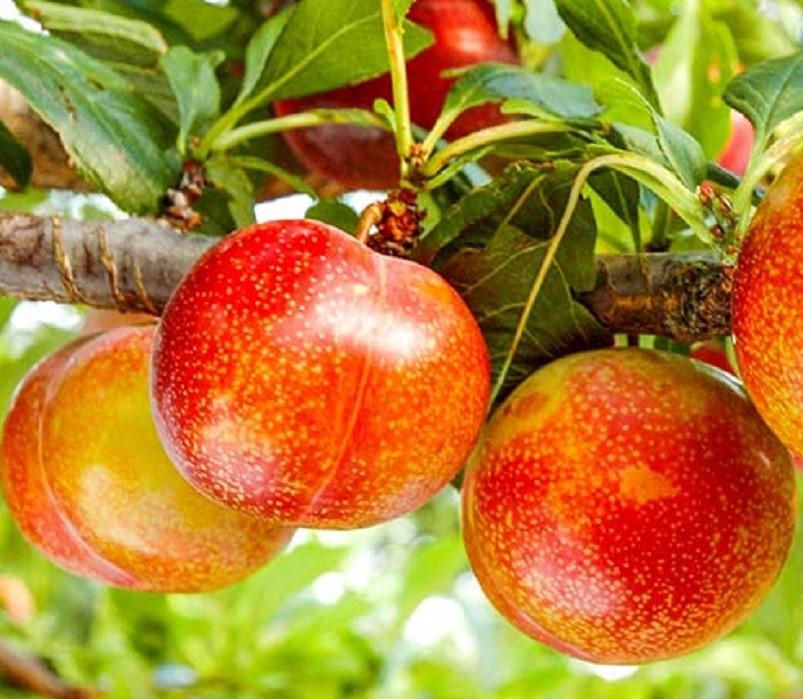
On average, a hybrid bears fruit for 40-50 years, and its fruits are quite tasty even when unripe.
Pros:
- winter hardiness;
- high productivity;
- excellent taste.
Minuses:
- impossibility of propagation by seeds.
Features of cultivation
Sharafuga Bella Gold develops well in windless, sunny, elevated or flat areas with fertile water- and breathable soil. Caring for a tree is simple and involves performing the following agrotechnical manipulations:
- Watering. The ground under the hybrid is irrigated with warm, settled water. The plant is watered as needed, after the top layers of soil have dried evenly. Over-wetting the soil can cause root rot. In spring, when there is frequent precipitation, watering is not carried out. During dry periods, the soil is moistened regularly, pouring up to 15 liters of water under each tree.
- Feeding. Fertilizer application can significantly increase productivity. In the spring, before buds appear on the branches, sharafugu is fed with organic matter. At the stage of bud formation, the tree is fertilized with ammonium nitrate and a nitrogen mixture, which promotes the growth of green mass.At the bud setting stage, nectacotum is fed with superphosphates and potassium fertilizers, and to stimulate fruit ripening, manganese, selenium, potassium and calcium are added to the soil.
- Loosening the soil. Carry out regardless of the use of mulch to make the soil lighter and saturate it with oxygen. Loosening is carried out after each watering or rain.
- Trimmings. Considering that sharafuga is characterized by high growth rates and adds an average of 60 cm per season, it needs the formation of a crown. In the spring, before the sap begins to flow, the branches of the tree are shortened by half. This procedure is usually combined with sanitary pruning, which involves removing diseased or broken shoots. The cut areas must be treated with potassium permanganate or drying oil paint.
- Shelter for the winter. Although the Bella Gold variety sharafuga is characterized by high frost resistance, when grown in regions with harsh meteorological conditions, care must be taken in advance to preserve the tree’s root system. In autumn, the trunk of the hybrid is covered with earth to a height of 15 cm, and the trunk circle is mulched with sawdust, peat or manure.
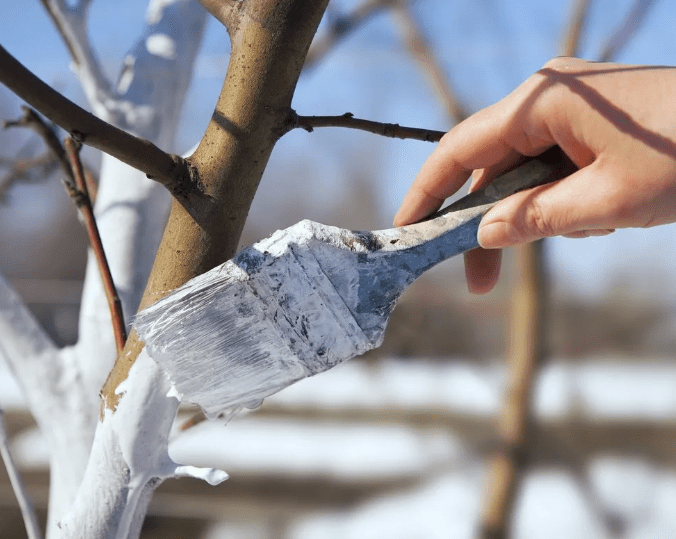
To reduce the likelihood of frost damage, the trunk and skeletal branches of the tree must be whitened on the eve of winter.
Diseases and pests
Although the Bella Gold sharafuga is characterized by immunity to various diseases and harmful insects, problems sometimes arise when growing it. To prevent burns, the development of fungal diseases and rodent attacks, the trunk and skeletal branches of the tree are whitened with lime mortar in spring and autumn.
Autumn cleaning of damaged bark will help protect Bella Gold sharafuga from diseases. The peeled cambium must be collected and burned.Fallen leaves, mulch residues and rotten fruits are removed from the tree trunk circle, otherwise the remaining debris will contribute to the appearance of diseases and pests.
You can protect the hybrid from insect attacks by performing foliar treatment with onion or garlic solution. In case of pest infestation, it is recommended to use insecticides.
Conclusion
Sharafuga Bella Gold is a medium-sized hybrid that combines the best characteristics of peach, apricot and plum. Its sweet, non-fibrous fruits tolerate transportation well and are equally good both fresh and canned.
Reviews from gardeners about sharafuga Bella Gold
